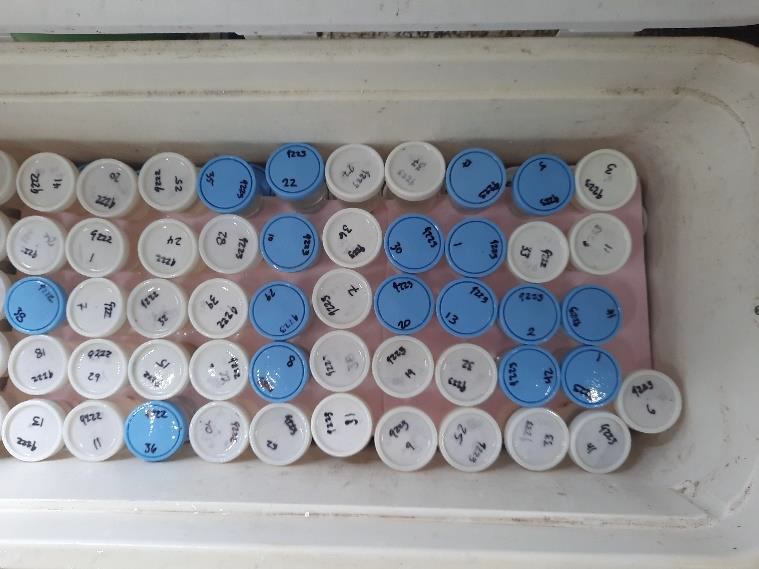In early November, Genoa NFH staff were busy collecting and checking Hine’s Emerald Dragonfly larvae that had spent the 2023 growing season in culture at the Hatchery. These larvae had been collected as eggs in late summer 2022 by research partners with the University of South Dakota, and had been transferred as eggs to Genoa NFH last November. This cohort was the first group from the Lower Des Plaines River (IL) population to be cultured at Genoa NFH; previous cohorts of Hine’s Emeralds had been collected from a population in Northern Wisconsin. The population in the Des Plaines River area is smaller though more genetically diverse than the Northern Wisconsin population, this coupled with increased threats from urban development (the Chicago metro area) makes augmentation and conservation of the Des Plaines population a high priority for this project.
Hine’s Emerald Dragonfly larvae collected from its culture cage at the end of the growing season and placed in a culture cup for transport. Larvae from Genoa NFH will over winter at the University of South Dakota in Dr. Dan Soluk’s research lab..
This year’s cohort at Genoa NFH had 43.5% survival from the egg stage to the end of the growing season, or 241 individuals. They were transported to USD for over wintering, and when they are ready to emerge as adults, will be released into the habitats along the Des Plaines River to augment that population. As these larger larvae were leaving Genoa NFH, the next cohort was arriving—Lower Des Plaines River population eggs that had been collected in late summer 2023 to over winter at the Hatchery. Drought conditions last summer limited the number of ovipositing females that could be collected, so the 2024 cohort is going to be a smaller group than previous years. These eggs will be held at a steady 3-4°C all winter, until warming in the spring begins the hatching process and the cycle continues.
By: Beth Glidewell
Hine’s Emerald Dragonfly eggs housed at Genoa NFH. Individual Hine’s Emerald Dragonfly larvae packed for transport. Photo credit: Beth Glidewell/USFWS.


